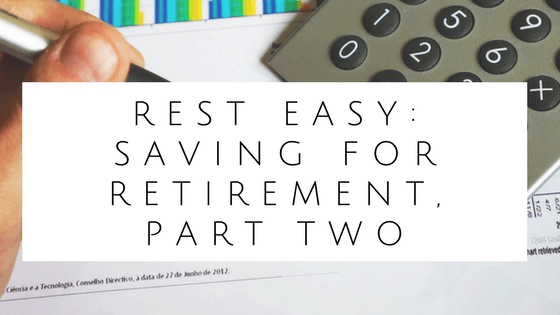Now that we’ve gone over creating a budget to determine your goals and how much you can reasonably afford, we will move on to the savings part of this series. Saving for retirement requires dedication and self-discipline. Today, I will explain step-by-step the process for maximizing your savings potential. However, this will focus on non-retirement savings accounts, which can also be useful as your get older.
Step One: Research
The most important part of opening a savings account is making sure you are opening the account that best fits you. Many banks and credit unions offer great interest rates on basic savings accounts. If you have thousands of dollars already saved, though, you should consider opening an account that caters to people with larger sums. Often, you’ll receive better interest rates, but you may have to pay fees if your balance drops below a threshold.
One other option to keep in mind is an online-only bank. Banks that do not use brick-and-mortar facilities can offer better rates than traditional banks in many cases. However, the security risks and convenience factor will be different than a physical bank, so keep in mind the pros and the cons before you make a decision.
Step Two: Open an Account
Of course, the next step is opening the account. Many banks offer the option to sign up online, but if you have any questions, go to your nearest branch to ask a representative. Keep in mind, you will need cash or a check for a deposit, so don’t go empty-handed. Banks cannot take debit or credit card transactions. Once you have the account opened, make sure you get the full account number and bank routing number. This can be important if you need a direct deposit, a withdrawal, or if you have questions about your account and need to call the help line.
Step Three: Save Each Month
The most important factor on this list is this: saving. Theoretically, you don’t even need a savings account to begin stashing your money. There are a few ways you can do this. You can set up a direct deposit from your work, which can deposit a percentage or a set amount from your paycheck into your savings account. You can also set up an automatic transfer through your bank, where money goes from another account right into your savings account each month. Finally, you can manually transfer or deposit money into your savings account, which may be the best option if your income is not stable.
Step Four: Other Ways to Save
If you want to increase your savings habits, there are many extra options you can utilize. Sign up for cash back services, such as Ebates. You’ll get cash back for your online purchases in the form of a check, which you can deposit into your savings account. You can also save your tax returns each year, which can provide a hefty boost to your balance. Finally, you can use an automated savings app to save without thinking about it. The plus is, there are so many apps that you’re sure to find one that fits your lifestyle.
Saving for retirement may seem difficult, but the first step is saving in general. Having a general savings account allows you to have emergency money that isn’t tied up in time accounts. However, next time we will uncover the many positives of various investment accounts and why you should consider opening one.
Sylvester Knox is a financial advisor specializing in wealth management. For more financial information, please visit: SylvesterKnox.net

